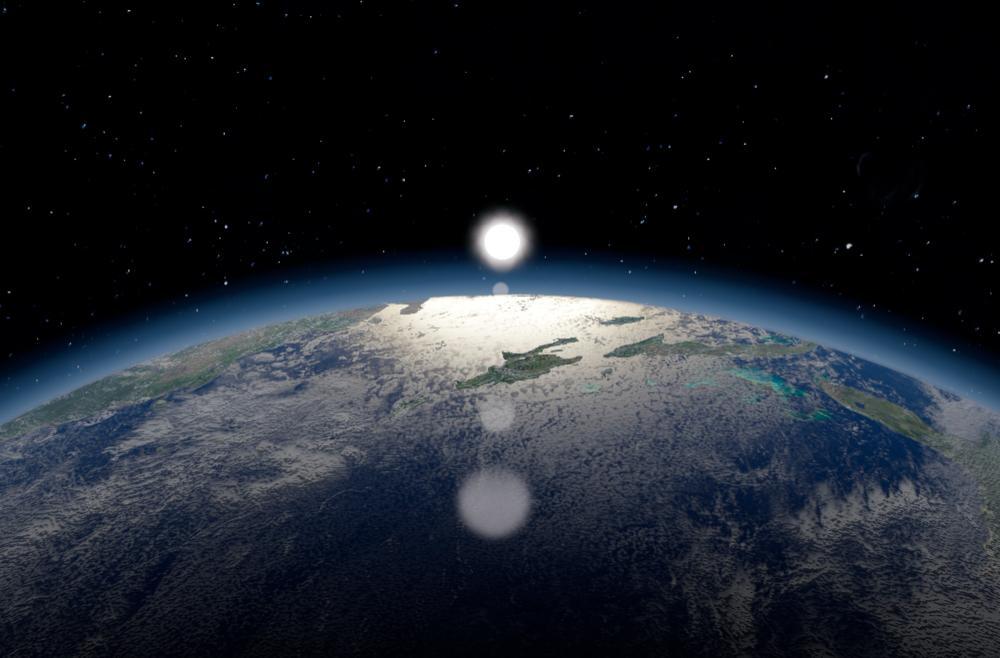NASA Makes Discovery ‘As important as gravity’ About The Earth
A groundbreaking discovery has revealed a planet-wide electric field on Earth, as fundamental as gravity. This ambipolar electric field, originating 150 miles above the planet’s surface, has been characterized as a “great invisible force” that lifts the sky and drives the polar winds.
These polar winds interact with jet streams, influencing the majority of global weather patterns.
First Measurement of Theorized Field Achieved by NASA Team
Previously only theorized, this field has now been measured for the first time.

Source: Ethan Miller/Getty Images
A NASA team, including scientists from the University of Leicester, achieved this breakthrough by launching a rocket into the field.
Earth’s Three Key Energy Fields
With this discovery, Earth now has three key energy fields.

Source: Freepik
These are gravity, the magnetic field that protects the planet from cosmic radiation, and the newly identified ambipolar electric field.
Dr. Collinson on the Supersonic Polar Wind
Dr. Glyn Collinson, principal investigator of the Endurance Mission at NASA’s Goddard Space Flight Center, explained, “Whenever spacecraft have flown over the poles of the Earth they have felt this supersonic wind of particles called the polar wind.”

Source: Alexander Gerst/ESA via Getty Images
“There must be some invisible force lurking there responsible for this outflow, but we’ve never been able to measure it because we didn’t have the technology.”
The Role of the Ambipolar Electric Field
Collinson continued, “This field is so fundamental to understanding the way the planet works. It’s been here since the beginning alongside gravity and magnetism.”

Source: Pixabay/Pexels
It’s been wafting particles to space and stretching up the sky since the beginning.”
Difficulty in Detecting the Weak Ambipolar Electric Field
The ambipolar electric field is challenging to detect due to its extreme weakness—just 0.55 volts.

Source: Freepik
However, this small amount is sufficient to nearly triple the scale height of the ionosphere, which extends between 30 and 600 miles above sea level.
The Scale Height of the Ionosphere
The scale height indicates how rapidly the atmosphere fades, meaning the ionosphere remains denser at higher altitudes than it would otherwise.

Source: Wikimedia
Dr. Collinson added, “Despite being weak, it’s incredibly important; it counters gravity and lifts the skies up. It’s like this conveyor belt, lifting the atmosphere up into space. A half a volt is almost nothing—it’s only about as strong as a watch battery. But that’s just the right amount to explain the polar wind.”
Habitable Planets
Understanding the atmosphere is essential for studying Earth’s evolution and could help scientists identify other potentially habitable planets.

Source: Wikimedia
The team believes that any planet with an atmosphere likely possesses an ambipolar field.
Mission Launch from the World’s Most Northerly Pad
To explore this field, scientists launched their mission from the world’s most northerly launch pad in Ny-Alesund, Svalbard, Norway, just a few hundred miles from the North Pole.

Source: Wikimedia
The mission, named Endurance after Ernest Shackleton’s 1914 Antarctic expedition ship, began in 2016.
Prof. Suzie Imber on Svalbard's Unique Rocket Range
Prof. Suzie Imber, a space physicist at the University of Leicester and co-author of the study noted, “Svalbard hosts the only rocket range in the world where you can fly through the polar wind and make the measurements we needed.”

Source: PIRO4D/Pixabay
The team discovered that hydrogen ions, the predominant particles in the polar wind, experience an outward force from this field, which is 10.6 times stronger than gravity.
The Field’s Impact
Alex Glocer, the Endurance project scientist at NASA Goddard and co-author of the study, remarked, “That’s more than enough to counter gravity”

Source: Wikimedia
“In fact, it’s enough to launch them upwards into space at supersonic speeds.” The discovery of the ambipolar electric field was published in the journal Nature.
Earth's Unique Energy Fields
Dr. Collinson concluded, “What makes Earth the special place that we all call home? One of the reasons may be to do with the energy fields that our planet creates. One of them is gravity. It’s important for life because it’s holding our atmosphere up.”

Source: Javier Miranda/Unsplash
“The second field is the magnetic field that’s protecting our planet from the stream of particles that comes from the sun. Our rocket has discovered, and finally measured, number three. Now that we’ve finally measured it, we can begin learning how it’s shaped our planet as well as others over time.”
